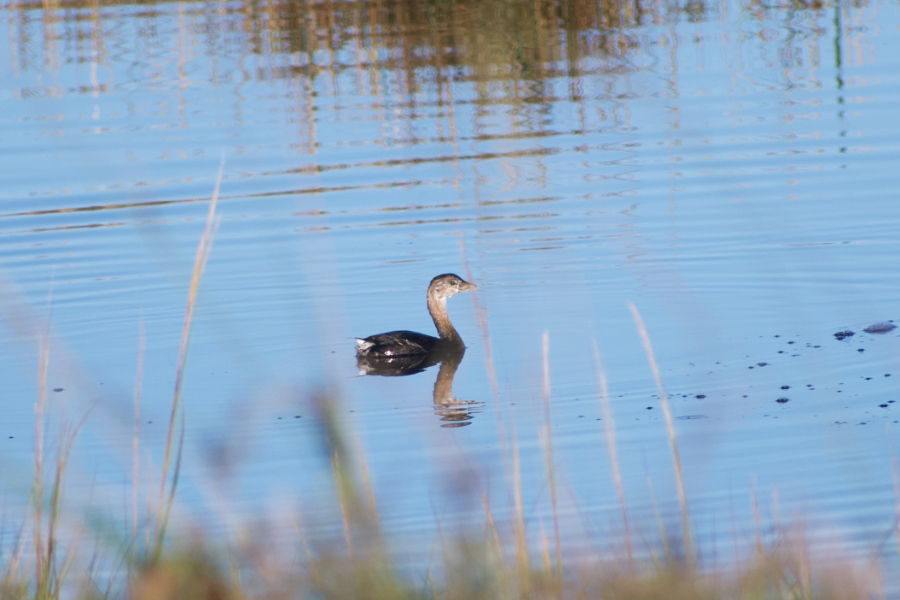The migratory waterfowl are returning once again to Pea Island National Wildlife Refuge, the wildlife refuge that is the northern 11 miles of Hatteras Island.
Soem of the more spectacular migratory species have already shown up. The American White Pelican numbers in the 100s in the impoundment ponds. That ’s a new development and is probably related to warming trends in the atmosphere.
And, of course, there’s the migratory waterfowl that doesn’t migrate any longer. That would be the Canadian Goose.. According to wildlife biologists, even resident populations—and there is a very substantial resident population at PINWR—exhibit some migratory behavior. From a lay perspective, though, it is not apparent that they are doing so.
But what’s really happening at PINWR right now, are thousands and thousands of migratory waterfowl are coming home for the fall/winter season. Northern pintails and tundra swans are returning. So are the red ducks and snow geese and so many other ducks and geese that migrate from winter nesting grounds to the warmer waters of the Outer Banks.
Pied-billed Grebes aren’t very good flyers, so they don’t migrate very far, but their nesting grounds are in the northern US and Canada. Now that the weather has cooled in the far north, they are once again part of the waterfowl swimming in the impoundment.
They are a diving species, submerging for food or making what appears to be a crash dive completely beneath the surface when endangered. Their legs are farther to the rear than most waterfowl. That’s why they can dive so well, but that also means they don’t do very well on land.
Pied-billed Grebes are fairly common, although not always seen right away—they do spend a lot of time under water.
Stop by the Outer Banks this winter and experience nature in all its beauty and complexity—and then return to the comfort of a Brindley Beach Vacations home.

